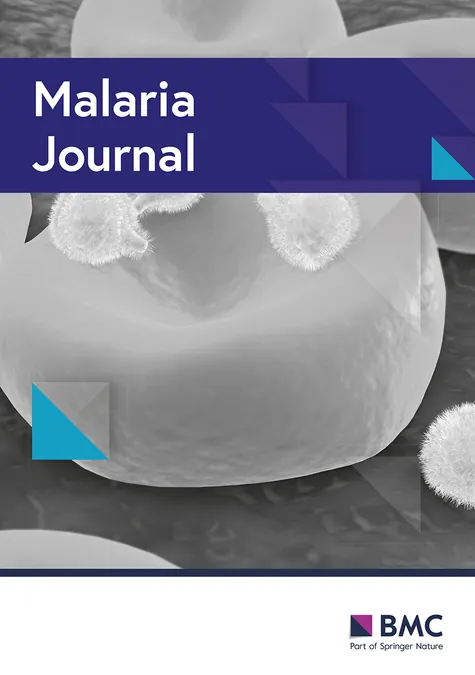
Revolutionary Strategies in the Fight Against Malaria: Unlocking the Power of Combined Approaches
2025-04-01
Author: Sarah
Introduction
The quest for malaria elimination has emerged as one of the most critical public health challenges of our time. Defined as the interruption of local transmission and reducing malaria cases to zero, this goal is urgently needed, especially in high-transmission areas across sub-Saharan Africa. Despite significant advancements and renewed global commitments—such as the World Health Organization’s (WHO) "High Burden High Impact" initiative—the road to elimination is fraught with difficulties, including evolving epidemiological patterns, drug and insecticide resistance, and the inherent weaknesses of health systems in endemic countries.
The Power of Combined Interventions
Recent studies have revealed the immense potential of combining different strategies to create synergistic effects—where the impact of merged interventions is greater than their individual contributions. For instance, combining Mass Drug Administration (MDA) with Indoor Residual Spraying (IRS), or newer vaccine strategies with established preventive measures like Long-Lasting Insecticidal Nets (LLINs), has shown promising results. However, caution is warranted, as not all combinations yield positive outcomes. The partnership of LLINs and IRS, for example, has not resulted in additional benefits according to some studies.
The success of malaria elimination strategies heavily depends on the unique context of each country, such as the malaria burden, the political commitment to tackle the disease, and the robustness of healthcare systems. This nuance underscores the importance of tailoring interventions to fit local transmission dynamics while addressing the operational challenges present in resource-limited settings.
Historical Context and Lessons Learned
The journey toward malaria eradication has been long and complicated. Historical efforts such as the Global Malaria Eradication Programme (GMEP), introduced by the WHO in 1955, aimed to eradicate malaria through aggressive vector control measures like the use of DDT. However, due to unforeseen challenges, including widespread resistance and declining financial support, the GMEP ultimately faltered. The lessons drawn from these earlier endeavors emphasize the necessity of flexible, community-inclusive strategies that integrate with existing health systems and leverage surveillance capabilities.
The Role of Vector Control
Vector control remains a cornerstone of malaria prevention. LLINs, treated to remain effective for several years, provide essential protection against malaria, particularly for vulnerable populations. IRS, which involves applying insecticides to surfaces within homes, acts as a second line of defense by reducing mosquito populations. The judicious deployment of these approaches, adjusted according to the specific epidemiological context, is critical in high-risk regions like Uganda and other parts of sub-Saharan Africa.
Targeted Case Management and Vaccination Breakthroughs
In the early 2000s, African countries shifted to using Artemisinin-Based Combination Therapy (ACT) as a first-line treatment for malaria, responding to the rising incidence of drug-resistant malaria parasites. This change has been instrumental in reforming national malaria control strategies, supported by health organizations and initiatives that supply ACTs.
Moreover, the recent approval of malaria vaccines like RTS,S/AS01 and R21/Matrix-M has opened new avenues for protecting high-risk groups such as infants. However, challenges remain regarding vaccine accessibility, uptake, and cost, all of which must be addressed to ensure these new tools can be utilized effectively.
Conclusion: The Future of Malaria Elimination
As we move forward, the need for a comprehensive, synergistic approach is more critical than ever. Tailoring strategies to local contexts not only maximizes the efficacy of interventions but also ensures that initiatives are resilient against the myriad factors influencing malaria transmission. Furthermore, as the global health community rallies around malaria elimination, strengthening health systems and engaging local communities will be pivotal in sustaining progress.
In this ongoing battle against malaria, the synergy of concurrent vector control and treatment strategies stands as a beacon of hope, illuminating the path towards achieving a malaria-free future. Will the world come together to make malaria a thing of the past? The answer lies in our collective commitment to innovation, perseverance, and collaboration.




 Brasil (PT)
Brasil (PT)
 Canada (EN)
Canada (EN)
 Chile (ES)
Chile (ES)
 Česko (CS)
Česko (CS)
 대한민국 (KO)
대한민국 (KO)
 España (ES)
España (ES)
 France (FR)
France (FR)
 Hong Kong (EN)
Hong Kong (EN)
 Italia (IT)
Italia (IT)
 日本 (JA)
日本 (JA)
 Magyarország (HU)
Magyarország (HU)
 Norge (NO)
Norge (NO)
 Polska (PL)
Polska (PL)
 Schweiz (DE)
Schweiz (DE)
 Singapore (EN)
Singapore (EN)
 Sverige (SV)
Sverige (SV)
 Suomi (FI)
Suomi (FI)
 Türkiye (TR)
Türkiye (TR)
 الإمارات العربية المتحدة (AR)
الإمارات العربية المتحدة (AR)